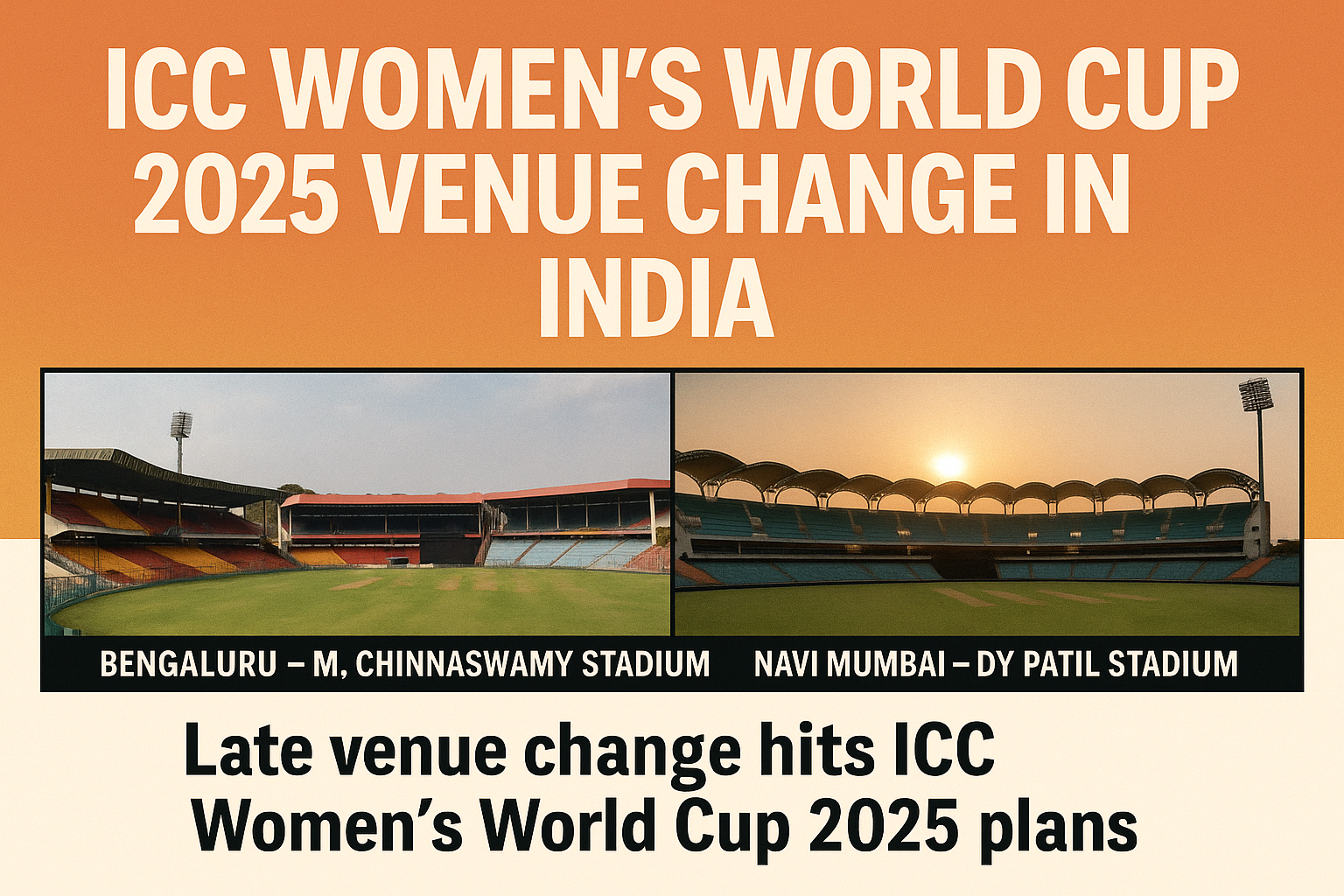ICC Women’s World Cup 2025 Venue Change Creates a Bad Image for Tournament Planning

The ICC Women’s World Cup 2025 is set to begin on September 30 and run until November 2, with eight teams competing for the top prize in women’s cricket. India and Sri Lanka will co-host the tournament, making it one of the most anticipated events in the women’s game. But instead of the buzz being about players, rivalries, or opening fixtures, the focus has shifted to a last-minute venue change. Bengaluru’s M. Chinnaswamy Stadium has been replaced by Navi Mumbai’s DY Patil Stadium just weeks before the event.
While this decision does not affect TV viewers sitting at home, it definitely paints a poor picture of how the tournament is being managed. Fans who had planned their trips to Bengaluru are left scrambling, and the overall image of the event takes a hit. For a competition that is supposed to elevate women’s cricket on the global stage, this kind of last-minute adjustment does not look good.
Why This Venue Change Raises Questions
Both M. Chinnaswamy Stadium and DY Patil Stadium are world-class venues. The problem is not with the quality of facilities. The issue lies in the timing. Changing a major venue weeks before the tournament creates unnecessary confusion and damages confidence in planning.
Fans who booked hotels, flights, and time off work to watch matches in Bengaluru now face the hassle of rearranging everything or cancelling their plans altogether. For local fans, it is even more disappointing. The excitement of hosting World Cup matches in their home city has been taken away without warning.
Women’s Cricket Cannot Afford Such Missteps
The harsh truth is that women’s cricket is still far behind the men’s game when it comes to viewership and commercial attention. The men’s World Cup fills stadiums, dominates conversations, and attracts massive sponsorship deals. The women’s game is improving but it is still building an audience.
This is why professionalism and stability are so important. Fans and sponsors need confidence that the women’s game is run with the same seriousness as the men’s. Every misstep, like a venue change at the last minute, reinforces the perception that women’s cricket is still treated as secondary. That does not help the game grow.
The Importance of Early and Stable Planning
Global tournaments require fans to plan months in advance. International supporters need visas, flights, and time away from work. Even domestic fans have to consider travel and accommodation. Publishing schedules one year in advance is the gold standard. At the very least, six months of notice should be guaranteed.
When fans are told that a venue has changed only a few weeks before the tournament, it shows poor foresight. It also risks empty stands, because many supporters will find it impossible to adjust at such short notice. A women’s World Cup with half-filled stadiums sends the wrong message, no matter how good the cricket is.
The Television Argument Isn’t Enough
Organizers may argue that television viewership will not be impacted. And yes, millions will still watch from home. But TV ratings alone are not enough to grow the women’s game. Stadium crowds are vital. They create the energy, the chants, the atmosphere that make the event feel grand. That atmosphere inspires players, excites broadcasters, and convinces the next generation of fans to get involved.
By creating hurdles for fans who wanted to attend in person, the organizers risk weakening one of the most powerful tools for growth and live engagement.
DY Patil Stadium is a Strong Venue
To be clear, Navi Mumbai’s DY Patil Stadium is a strong choice. It has modern facilities and a history of hosting big matches, including women’s fixtures. Its location near a major metro city also gives it the potential to attract crowds. If the stadium fills up, the matches will look and feel world-class.
But that is not the point. The problem is that instead of celebrating the addition of a strong venue, the conversation is about poor planning and last-minute fixes. Even good decisions can feel negative if they come at the wrong time.
A Bad Look for the Women’s Game
The ICC Women’s World Cup 2025 should be about growth and progress. It should showcase women’s cricket as organized, professional, and worth the same respect as the men’s game. Instead, it has started off with headlines about uncertainty and poor communication.
This is not a disaster, but it is a bad look. Every global event is judged not just on what happens on the field but also on how well it is managed off the field. Fans remember the chaos just as much as the cricket.
Final Thoughts
The ICC Women’s World Cup 2025 will still deliver exciting cricket from September 30 to November 2, with eight of the best teams in the world competing for glory. But the venue change from Bengaluru’s M. Chinnaswamy Stadium to Navi Mumbai’s DY Patil Stadium leaves a mark. It may not be a major blow to the tournament, but it creates a bad image of planning and organization at a time when women’s cricket needs the opposite.
If the women’s game is to grow, it needs to prove that it can match the professionalism of men’s tournaments. That means stable schedules, transparent communication, and putting fans first. Anything less will only slow down the journey of women’s cricket to the global stage it deserves.





